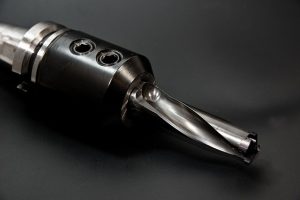
Drilling is an age-old cutting process that involves the use of a manual or machine-powered tool bit to cut a cross-sectional hole in a workpiece. The tool bit is pressed against the surface of the workpiece, at which point it rotates to scoop out material, thereby creating a hole in the workpiece. Friction drilling, however, is a unique cutting process that’s characterized by the use of friction. To learn more about friction drilling and how it works, keep reading.
Overview of Friction Drilling
Thermal friction drilling, or what’s more commonly known simply as friction drilling, is a cutting process that uses friction to assist with the removal of material. With friction drilling, the tool bit creates friction as it rotates into the workpiece. Friction, of course, creates heat, which then helps to remove material from inside the workpiece.
Friction drilling requires the use of a special tool bit to create friction and, thus, heat. The tool bit features a conical shape and is constructed of a heat-tolerant material, the most common being cemented carbide. When used in friction drilling, the tool bit will rotate against a workpiece’s surface. Combined with pressure, the rotational movement of the tool bit will dig into the workpiece while creating friction to assist with the removal of material.
Origins of Friction Drilling
According to Wikipedia, friction drilling was pioneered in the early 1920s by Jean Claude de Valiere. While researching alternative cutting solutions, Valiere came up with the idea of using friction to remove material from workpieces. This prompted the French engineer to develop a new tool bit that was capable of production friction. At the time, Valiere’s newly designed tool bit wasn’t particularly effective. Nonetheless, it paved the way for other, more effective friction drilling tool bits.
Benefits of Friction Drilling
When compared to conventional drilling processes, friction drilling offers several benefits. For starters, it produces little or no swarf. With other drilling processes, the excess material, known as swarf, is pushed out of the workpiece. Friction drilling uses heat to assist with the removal of material, so it typically melts the material to minimize the production of swarf.
Friction drilling is also faster than conventional drilling processes. Depending on the workpiece, as well as other factors, it may take just three or four seconds to create a hole in a workpiece using friction drilling. The use of friction heat helps to facilitate the removal of material, allowing for faster drilling times.
